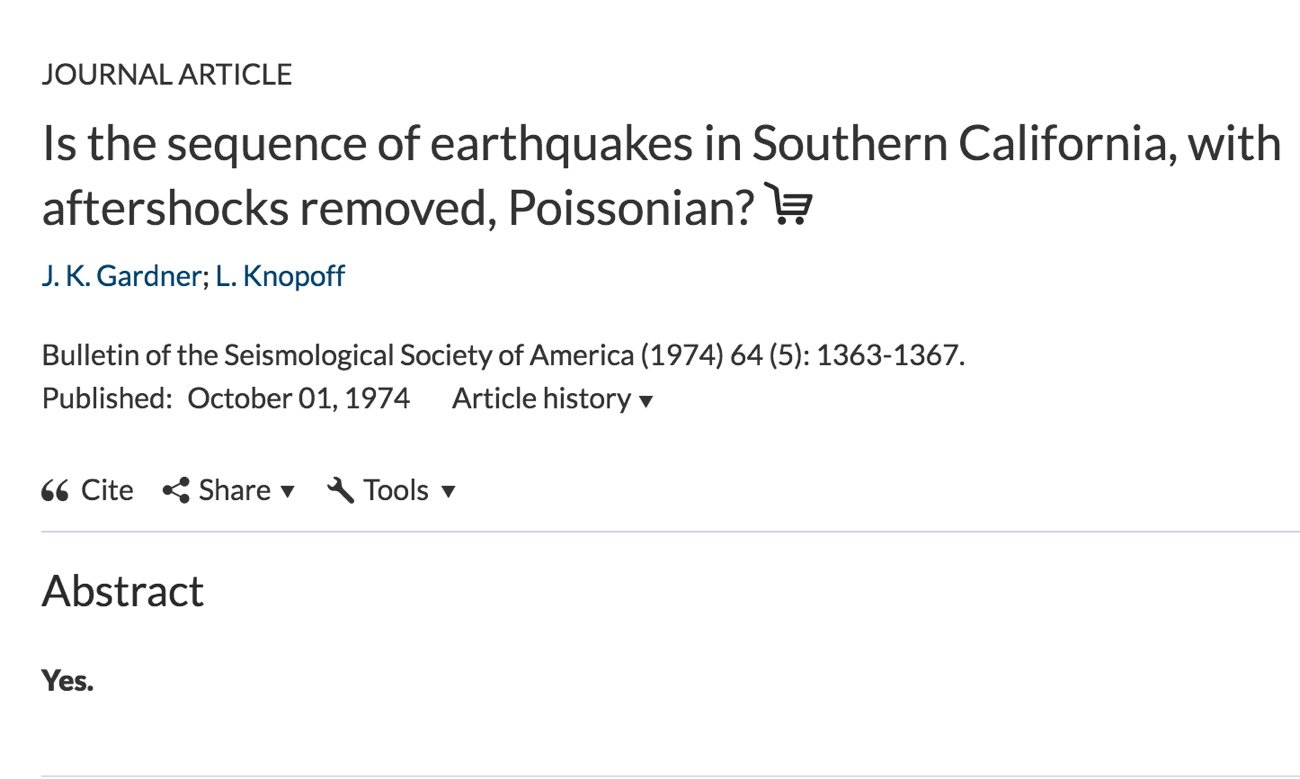Shortest Abstract for Scientific Paper Surfaces on Twitter

Sometimes, you follow the strict, formal rules of expression in your profession. And sometimes you wing it, just because you can.
In 1974, a pair of seismologists writing for the Bulletin of the Seismological Societ of America did something just because they could. They wrote a formal introduction, or abstract, for their paper "Is The Sequence Of Earthquakes, With Aftershocks Removed, Poissonian?" The abstract, which resurfaced on Twitter thanks to inventor and science-tweeter Cliff Pickover, consists of one word, and only three letters: "Yes."
Abstracts go at the top of just about every research paper published in fields ranging from psychology to physics to entomology to — yes — seismology. They summarize all the complicated methods, results, and interpretations that follow, often in plainer language. Reading abstracts is a great way for researchers, curious lay people and the occasional science journalist to follow developments in fields where they're not experts. Abstracts are also often the only part of a paper available to the public without paying journal subscription fees. [10 Weird and Terrifying Medical Instruments from the Past]
And this super-short abstract by J.K. Gardner and L. Knopoff does the job. Were all those SoCal earthquakes, with aftershocks removed, poissonian — which is to say, were they essentially random in their occurrence? Yes, they were, the abstract reveals.
The researchers were interested in whether SoCal earthquakes were random because they wanted to know if there was any hope of developing robust statistical tools to predict the next big one. If the earthquakes were non-poissonian (not random), the researchers wrote, it would have been possible with the data available in 1974 to develop a system for anticipating them. But, as the abstract explains, the earthquakes were poissonian. So no dice.
It's of course not certain that "yes" is not the shortest abstract ever published. (There could after all be a paper squirreled away out there somewhere with an abstract "no.") But neither Live Science nor the scientists who shared this paper on Twitter recently could find any shorter examples.
As recently as November 2015, Pickover did share a paper with a slightly longer abstract: The Journal of Physics A: Mathematical and Theoretical ran a paper in 2011 with the title "Can apparent superluminal neutrino speeds be explained as a quantum weak measurement?" and the abstract "Probably not."
Sign up for the Live Science daily newsletter now
Get the world’s most fascinating discoveries delivered straight to your inbox.
Originally published on Live Science.











